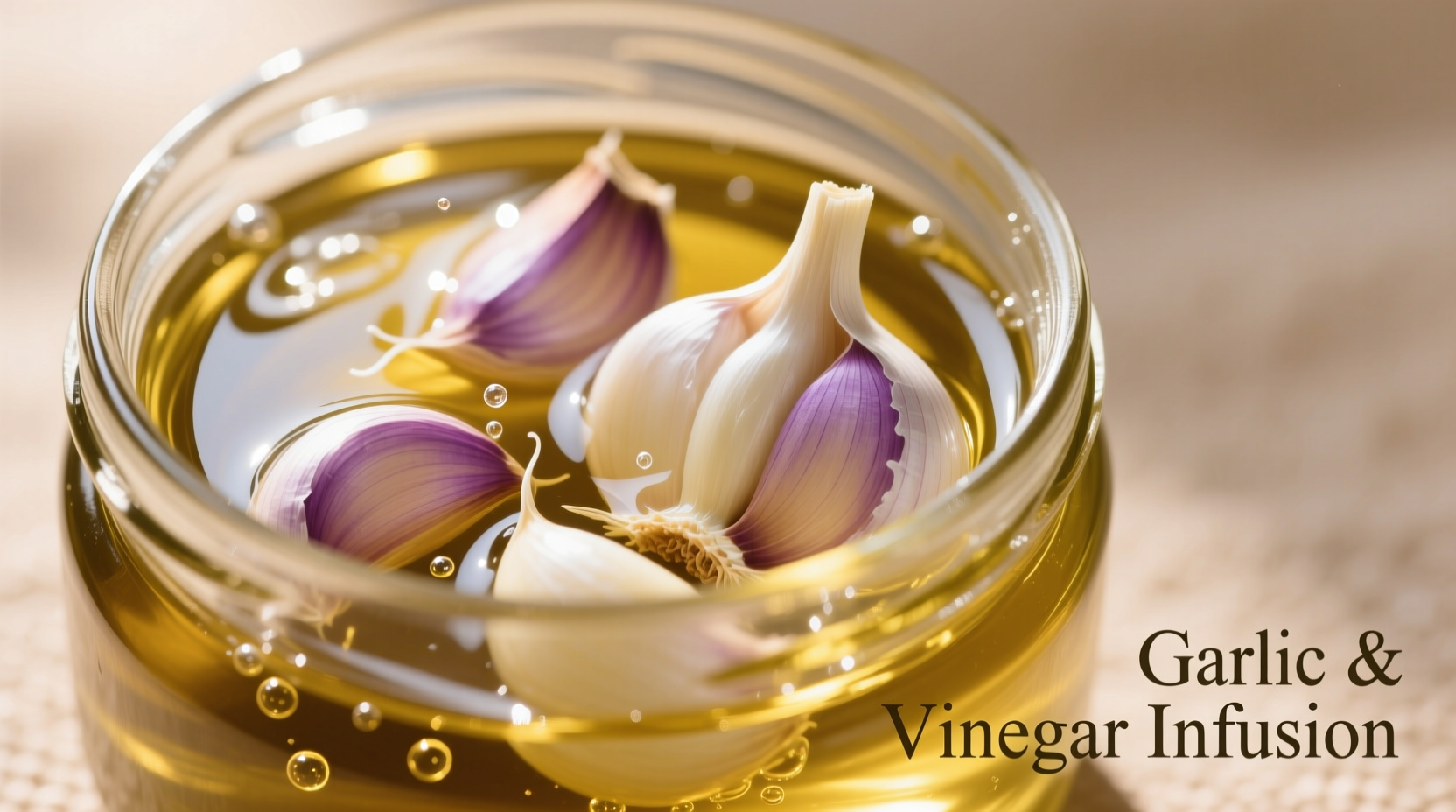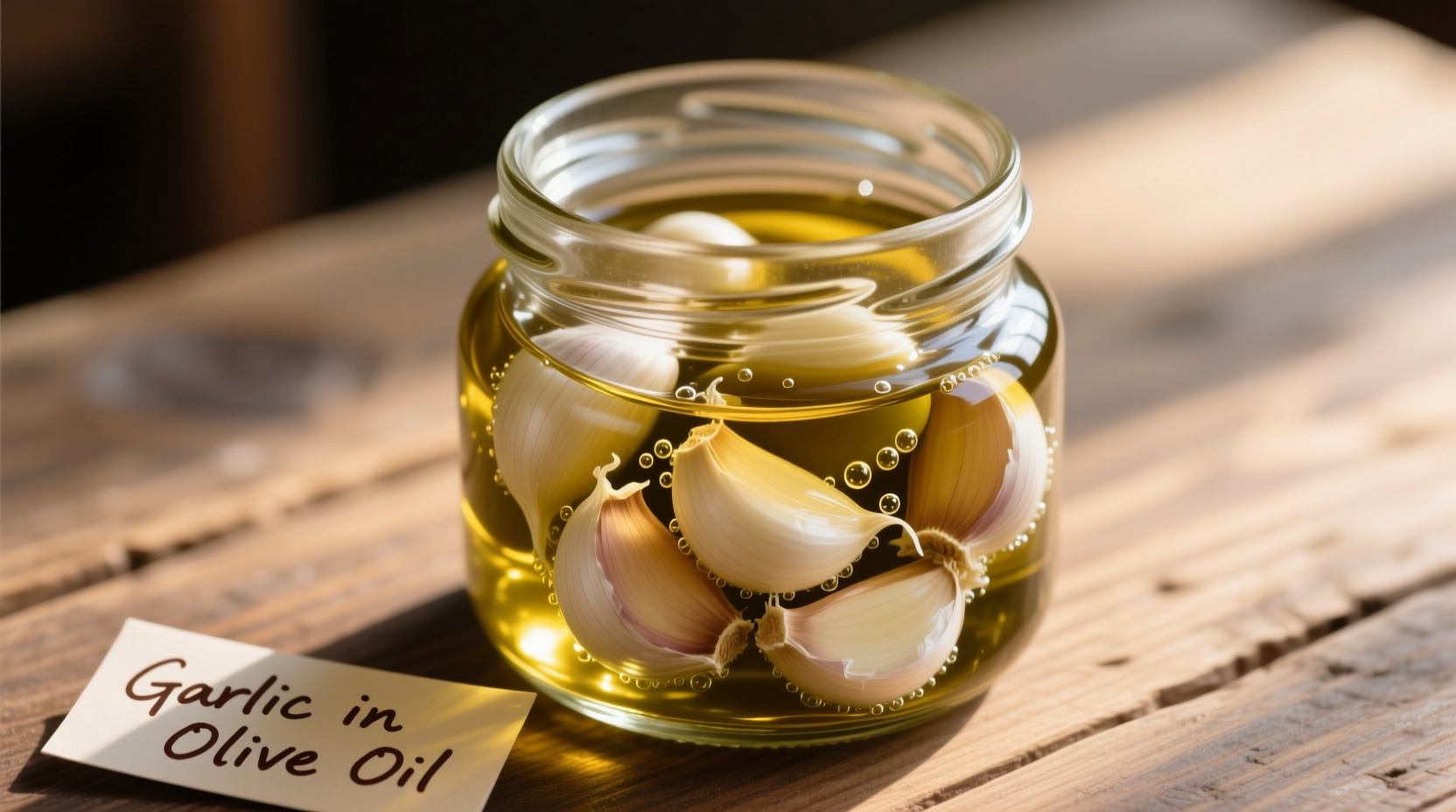Storing garlic in olive oil requires proper acidification and refrigeration to prevent botulism risk. When prepared correctly with vinegar and stored below 40°F (4°C), garlic in oil can safely last 2-4 weeks. Never store homemade garlic-infused oil at room temperature.
Discover the safe, professional approach to preserving garlic in olive oil that home cooks and chefs rely on for maximum flavor without compromising safety. This guide reveals evidence-based methods that eliminate botulism risks while enhancing your culinary creations with rich, infused flavors.
Understanding the Botulism Risk in Garlic-Infused Oil
Garlic submerged in oil creates an anaerobic environment where Clostridium botulinum spores can thrive and produce deadly toxins. The U.S. Food and Drug Administration (FDA) specifically warns that garlic-in-oil mixtures represent a significant botulism risk when improperly prepared. Unlike commercial products that use precise acidification and pasteurization, homemade versions require careful handling.
According to the Centers for Disease Control and Prevention (CDC), botulism cases linked to garlic-in-oil have occurred when home preparers stored the mixture at room temperature. The bacteria produce no visible signs of contamination—no unusual odor, color change, or bubbling—making this hazard particularly dangerous.
Safe Preparation Methods for Garlic in Olive Oil
Professional chefs follow these evidence-based steps to safely create garlic-infused oil at home:
- Acidify first: Combine garlic cloves with vinegar (5% acidity) at a 1:1 ratio before adding oil. The FDA recommends maintaining a pH below 4.6 to prevent bacterial growth.
- Use fresh garlic: Older garlic contains more moisture, increasing risk. Peel cloves immediately before preparation.
- Refrigerate immediately: Store below 40°F (4°C) in airtight containers.
- Consume within 2-4 weeks: Discard if cloudy appearance or off odors develop.
| Safety Factor | Unsafe Method | Safe Method |
|---|---|---|
| Acidification | No acid added | Vinegar added (1:1 ratio with garlic) |
| Storage Temperature | Room temperature | Refrigerated below 40°F (4°C) |
| Storage Duration | Indefinite | 2-4 weeks maximum |
| Garlic Condition | Pre-peeled, aged cloves | Freshly peeled cloves |
Storage Timeline and Shelf Life Guidelines
Understanding the precise timeline for garlic-infused oil prevents dangerous assumptions about its longevity. The National Center for Home Food Preservation provides these evidence-based storage guidelines:
- 0-24 hours after preparation: Critical period when acidification must occur. Without proper pH reduction, botulism risk increases exponentially.
- Days 1-7: Peak flavor development while maintaining safety when refrigerated.
- Weeks 2-4: Gradual flavor degradation begins. Discard if any cloudiness appears.
- Beyond 4 weeks: High risk even when refrigerated. Never consume.
Commercial products use additional safety measures like citric acid stabilization and strict pH monitoring that home kitchens cannot reliably replicate. The National Center for Home Food Preservation confirms that refrigeration alone is insufficient without proper acidification.

Practical Usage Tips for Garlic-Infused Oil
When prepared safely, garlic-infused oil enhances dishes with complex flavor profiles. Follow these chef-recommended practices:
- Use within 30 days for optimal flavor and safety
- Add directly to salad dressings or marinades
- Drizzle over finished dishes rather than cooking at high temperatures
- Freeze in ice cube trays for longer storage (up to 3 months)
- Never reuse oil that has contacted cooked food
Professional kitchens often create small batches weekly to ensure freshness and safety. The American Culinary Federation recommends labeling all infused oils with preparation dates and discarding after four weeks regardless of appearance.
Better Alternatives for Long-Term Garlic Storage
For extended preservation without safety concerns, consider these evidence-based alternatives:
- Dry storage: Whole bulbs in mesh bags in cool, dark places (3-6 months)
- Pickled garlic: Vinegar-based preservation (6+ months refrigerated)
- Freezing: Peeled cloves in airtight containers (12+ months)
- Dehydrated: Sliced garlic in food dehydrator (12+ months)
The University of California Cooperative Extension confirms that dry storage maintains garlic's allicin content better than oil preservation methods. For culinary applications requiring immediate use, fresh garlic provides superior flavor complexity compared to oil-preserved versions.











 浙公网安备
33010002000092号
浙公网安备
33010002000092号 浙B2-20120091-4
浙B2-20120091-4